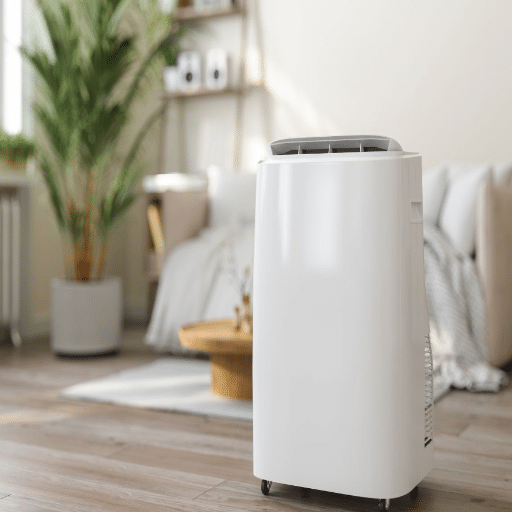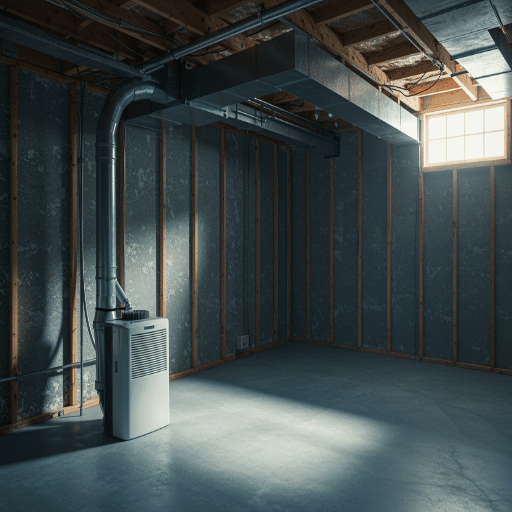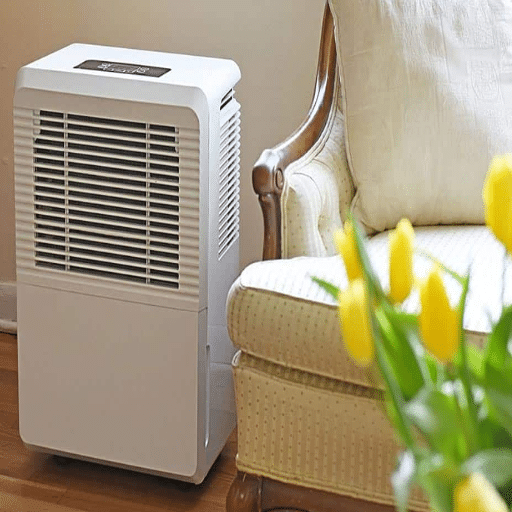Dehumidifiers are essential for providing a comfortable and healthy indoor atmosphere as they eliminate moisture from the air. But if your dehumidifier suddenly stops collecting water, it can be quite frustrating, and you may not be sure about what exactly happened. Whether you’re trying to reduce high humidity in your home or protecting your possessions from mold and mildew, a malfunctioning dehumidifier can easily throw off the balance of your household. Fortunately, most of these problems can be fixed through some troubleshooting.
Understanding Your Dehumidifier
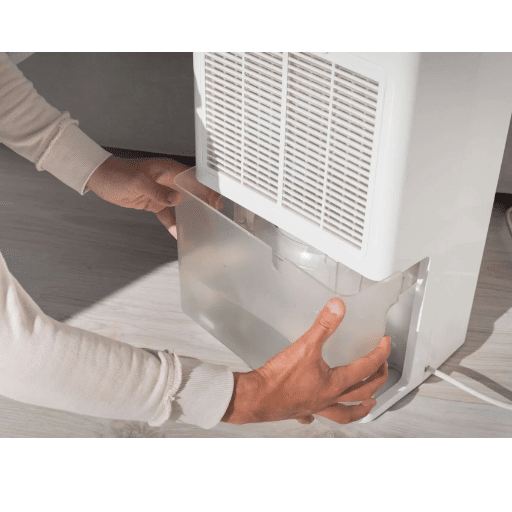
A dehumidifier operates by taking in humid air from a room, extracting the surplus moisture, and then pushing back dry air into the area. The air in the device goes through a cycle of passing over the cooling coils, where the moisture is turned into water and then collected in a tank or drained out through a hose. This procedure assists in lowering the humidity levels which, in turn, avoids the growth of fungi, mildew, and other issues associated with moisture in the house.
What is a Dehumidifier?
A dehumidifier is a powered appliance that has the purpose of decreasing and stabilizing the humidity level of the air, thus creating a more pleasant and safer indoor environment. It is typically employed in places with high humidity, like:
- Basements: Where moisture tends to accumulate
- Bathrooms: High-moisture environments
- Regions with moist climates: Areas prone to excessive humidity
Benefits of Dehumidifiers
Dehumidifiers not only lower air moisture content but also hinder the growth of mold, mildew, and dust mites, which are the main culprits of poor indoor air quality. High-end dehumidifiers usually feature adjustable humidity control, energy-efficient modes, and even smart sensors for effective moisture management.
How Does a Dehumidifier Collect Water?
Dehumidifiers obtain their water through a specific process:
- Air Intake: Humid air is pulled in with a fan
- Cooling Process: Air is cooled by blowing over cold coils or passing through an evaporator with refrigerant
- Condensation: Moisture in the air turns into liquid water
- Collection: Water either drips into an internal collection tank or is drained through a hose
💡 Desiccant vs. Refrigerant Dehumidifiers
Refrigerant Dehumidifiers: Use cooling coils to condense moisture
Desiccant Dehumidifiers: Absorb moisture through a special material, capturing water vapor directly from the air without any cooling involved
Common Reasons for a Dehumidifier Not Collecting Water
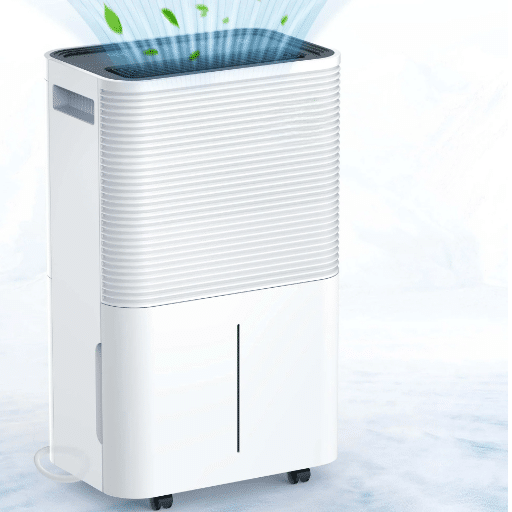
| Issue | Description | Solution |
|---|---|---|
| Incorrect Humidity Settings | Desired humidity level set too high | Set to 30-50% for optimal operation |
| Blocked Airflow | Dust and dirt in vents; clogged filters | Clean vents and filters regularly |
| Low Room Temperature | Below 65°F (18°C) | Use in warmer areas or switch to desiccant type |
| Full Water Tank | Tank at capacity or faulty float mechanism | Empty tank and check float switch |
| Refrigerant Leak | Loss of refrigerant or compressor issues | Professional maintenance required |
| Worn Components | Fans, coils, or seals deteriorated | Inspect and replace worn parts |
Identifying the Problem
To identify the problem with your dehumidifier accurately, it is necessary to perform a structured inspection. Start with checking the most apparent signs:
- Strange noises during operation
- Reduced moisture extraction
- Water dripping unexpectedly
- Absence of cooling effect
- Warm air blowing instead of cool, dry air
- Filthy filters or dirt accumulation
⚠️ Latest User-Reported Issues
According to recent Google search trends, one of the major problems reported by dehumidifier users is efficiency drop caused by air filters getting clogged. Regular filter cleaning and providing good air circulation can resolve or prevent this issue in most cases.
Signs Your Dehumidifier is Not Collecting Water
- High Humidity Persists: Humidity levels in your area stay high even with the dehumidifier running
- Empty Water Bucket: Water bucket remains empty after hours of operation
- Excessive Heat: Dehumidifier becomes abnormally hot
- Unusual Noises: Mechanical sounds indicating problems
- No Airflow: Sign of a defective internal fan
- Ice on Coils: Frozen coils preventing proper operation
- Stuck Drain Hose: Blocked drainage system
Checking the Humidity Level in Your Home
To ascertain the humidity level in your home, a hygrometer can be utilized—an instrument precisely made for measuring air moisture. These are commonly available in both analog and digital types.
Ideal Indoor Humidity Levels
30% – 50%
Below 30%: May cause dry skin and sore throat
Above 50%: Encourages mold, dust mites, and allergens
Troubleshooting Steps for Your Dehumidifier
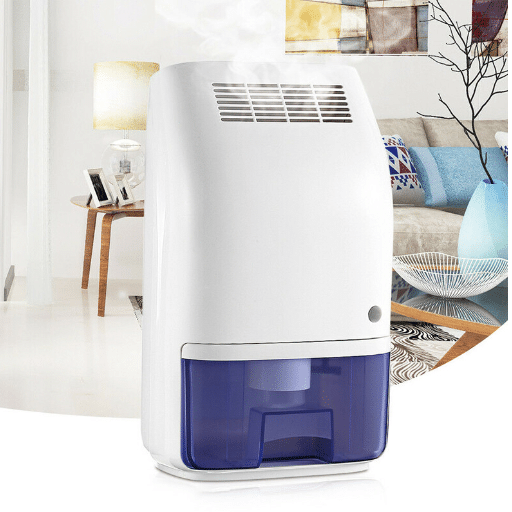
1 Check the Power Supply
First and foremost, check that the dehumidifier is properly plugged in and that the power outlet is working. Check the power cord for any possible damage. Test the outlet by plugging in a different device.
2 Inspect the Water Tank
Many dehumidifiers come with a feature that automatically turns them off when the water tank is full. After emptying the tank:
- Make sure it is put back in the right way
- Check if the tank sensor or float is immobilized
- Verify the full bucket indicator is not activated
3 Clean the Air Filter
The unit’s airflow is hindered and its efficiency decreased if the air filter is clogged. Follow these steps:
- Remove the filter according to manual instructions
- Wash using warm water or vacuum
- Dry completely
- Reinstall in the unit
4 Verify the Humidity Setting
The humidity setting should be checked against the needs of the room. If the desired humidity level is set too high, the device might not work as anticipated.
5 Inspect the Coils for Frost or Ice
Evaporator coils can get frost or ice if the temperature is low. Solution:
- Relocate the dehumidifier to a warmer place
- Allow it to thaw out completely
- Check if automatic defrost feature is working (if available)
6 Ensure Proper Placement
Placement Best Practices
- Don’t place too close to walls or furniture
- Allow sufficient distance for air to pass freely
- Position in the room’s most humid spot for better results
- Ensure minimum 12 inches of clearance on all sides
Assessing the Compressor and Cold Air Issues
| Problem | Possible Cause | Recommended Solution |
|---|---|---|
| Compressor Not Running | Malfunctioning thermostat or broken capacitor | Verify thermostat settings; replace defective capacitor |
| Insufficient Cooling | Refrigerant leak or dirty coils | Clean evaporator coils; seek professional help for refrigerant refill |
| Clogged/Frozen Coils | Airflow restrictions or low ambient temperatures | Clean filter; ensure well-ventilated spot; avoid extremely cold areas |
| Unusual Noises | Loose parts, worn-out components, motor issues | Tighten all parts; check for wear; replace faulty components |
| Not Removing Moisture | Non-working compressor, refrigerant leaks, clogged drainage | Inspect drainage system; test compressor; contact certified repair service |
Understanding Compressor Functionality
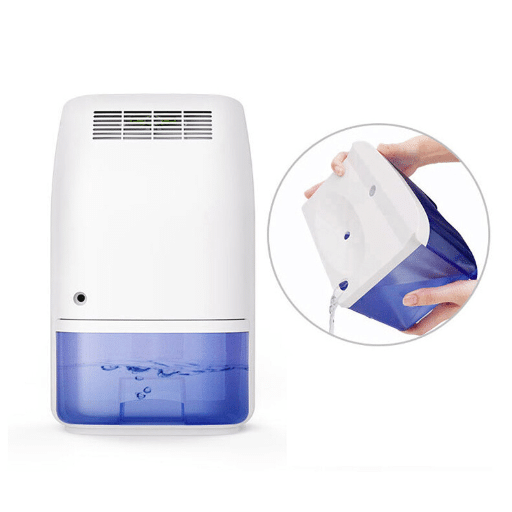
Compressors are an indispensable part of dehumidifiers and guarantee the best performance and energy efficiency. The main role of the compressor is to:
- Raise gas pressure by reducing its volume
- Take in low-pressure refrigerant vapor
- Force it to a high-pressure state
- Send it to the condenser where heat is exchanged
Advanced Compressor Technology
Variable Speed Compressors offer:
- Higher efficiency
- Flexibility to different load demands
- Lower power usage
- Smart automation and sensor integration
Evaluating the Appliance Settings and Placement
Adequate settings and proper positioning have an important part in dehumidifier performance.
Optimal Settings
Humidity Level: 30-50%
Temperature Range: Above 65°F (18°C)
Wrong settings could result in the machine working too hard or not removing enough moisture, thus being inefficient.
Positioning Guidelines
- Set up in an open place
- Not too close to walls or furniture that would hinder airflow
- Locate in the room’s most humid spot
- Use hygrometer to check humidity levels frequently
- Clean air filter regularly
- Keep all intake and exhaust vents free from obstruction
Inspecting the Water Collection Tank
The water collection tank is a critical component of dehumidifier operation. Regular checking and maintenance ensure optimal performance:
- Empty tank when full to prevent overflow
- Most modern units automatically shut off when tank is full
- Wash with mild soap and water periodically
- Prevents mold and bacteria growth
- Keeps air around the house smelling fresh
💡 Pro Tip: Continuous Drainage
To avoid frequent emptying, use a dehumidifier with continuous drainage option. Simply connect a hose to the unit and direct it to a floor drain or sink—no need to monitor and empty the tank, making long-term use more convenient.
Advanced Solutions
Recent data points to advanced solutions that can significantly improve dehumidifier efficiency:
Smart Technology Integration
| Feature | Benefits |
|---|---|
| Wi-Fi Connectivity | Remote humidity control via mobile apps |
| Real-Time Alerts | Cleaning and maintenance notifications |
| Smart Sensors | Automatic adjustment to maintain optimal levels |
| Air Purifier Integration | Enhanced indoor air quality improvement |
When to Consider a New Dehumidifier
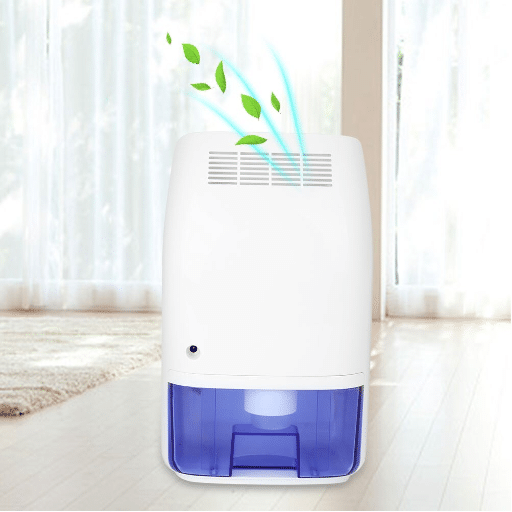
If your dehumidifier is not up to the mark, it may be time to consider an upgrade. Common reasons include:
- Ineffective Humidity Reduction: Continuing problems with dampness, mold, or mildew
- High Energy Bills: Older models consume significantly more power than new energy-saving designs
- Excessive Noise: Unit produces loud sounds during operation
- Frequent Breakdowns: Constant need for repairs
- Lack of Modern Features: No smart functionalities like mobile app control or accurate humidity sensors
Benefits of Upgrading
Modern dehumidifiers offer smart functionalities that make usage more convenient and provide improved performance. If your current unit doesn’t align with your lifestyle and air quality preferences, a newer model may pay off in the long run.
Whirlpool Dehumidifier Specific Troubleshooting
Dehumidifier Not Collecting Water
- Check room temperature (should be at least 65°F)
- Low temperature can freeze coils and stop water collection
- Room humidity level should be set correctly (usually over 40%)
- Clean or replace blocked air filter
Unit Shuts Off or Won’t Turn On
- Verify power and outlet functionality
- Check for obstructions in airflow or intake vents
- Ensure bucket is properly positioned
- Verify full bucket indicator is not activated
- Reset by unplugging for a few minutes
Ice Build-Up on Coils
Ice accumulation happens when dehumidifier runs in very cold areas. Solutions:
- Move to a warmer place
- Let ice melt before turning on again
- Check if built-in defrost function is working (consult manual)
Unusual Noises or Vibrations
- Check for loose parts
- Verify device is on a level surface
- Tighten bolts
- Place machine on straight surface
Error Codes Displayed
⚠️ Common Error Codes
“E3” Error: Typically indicates humidity sensor problem requiring replacement. Always refer to Whirlpool user manual for specific error codes, as they usually point to sensor or system errors.
Professional Repair vs. DIY Fixes
The choice between professional repair and DIY fixes greatly depends on the severity of the problem and your ability to fix it.
| Approach | Best For | Considerations |
|---|---|---|
| DIY Fixes | Minor problems: cleaning filters, tightening bolts, basic maintenance | Cost-effective; requires basic tools and knowledge; trending in search data |
| Professional Repair | Complex issues: circuit boards, malfunctioning sensors, compressor problems, “E3” error codes | Specialized tools required; prevents further damage; safer option for complex systems |
💡 Making the Right Choice
Professionals come equipped with special tools and in-depth knowledge to handle problems without risk of causing more damage. Weigh time, money, and risks involved if a DIY attempt backfires.
Prevention Tips
Regular Cleaning of Filters
At least once a month, the dehumidifier’s filters should be cleansed to avoid dust and dirt accumulation. Timely maintenance can increase appliance lifespan by up to 30%!
Ensure Proper Placement
For perfect air circulation, position the dehumidifier in a central spot with few barriers. Placing it on an even surface at a distance from walls can boost efficiency by 20%.
Monitor Humidity Levels
Use a hygrometer to ensure indoor humidity remains at 30-50%. Very high or very low humidity may cause the dehumidifier to work harder than usual, leading to breakdown.
Empty the Water Tank Frequently
To stop mold and bacteria growth, empty and clean the water tank regularly. Performing this action daily or as necessary minimizes contamination and ensures optimal efficiency.
Inspect for Wear and Tear
Periodically check power cord, housing, and all components for signs of damage. Taking care of problems while they’re still small can save money on repairs and increase safety.
Maintaining Optimal Humidity Levels

Maintaining the right humidity levels is a must for comfort, health, and house protection. Environmental health guidelines generally suggest indoor humidity should be in the 30-50% range.
| Humidity Level | Effects | Recommended Action |
|---|---|---|
| Below 30% | Dry skin, irritated eyes, respiratory problems | Use humidifier to add moisture |
| 30-50% (Ideal) | Comfortable, healthy environment | Maintain with proper ventilation |
| Above 50% | Mold, dust mites, bacteria thrive | Use dehumidifier to remove moisture |
Additional Humidity Control Measures
- Proper ventilation throughout the home
- Fix leaks promptly
- Ensure adequate insulation
- Use reliable humidifier or dehumidifier as needed
- Use hygrometer for accurate monitoring
Regular Maintenance for Your Dehumidifier
To keep your dehumidifier running efficiently and effectively, regular maintenance is crucial:
- Air Filter: Clean every 2-3 weeks with mild detergent
- Water Tank: Empty and clean frequently to prevent mold and bacteria
- Coils: Check for dirt and gently wipe to ensure proper airflow
- Drain Hose: Examine for blockages or leaks (if equipped)
- Annual Inspections: Have professional check for wear and tear or technical problems
Understanding Relative Humidity and Its Impact
Relative humidity is the ratio of current water vapor in the air to the maximum amount the air could hold at that temperature, expressed in percentage.
Effects of Relative Humidity
| Condition | Impact on Comfort | Health Effects |
|---|---|---|
| High Relative Humidity | Air feels heavy and uncomfortable | Increased mold/mildew; asthma complications |
| Low Relative Humidity | Air feels dry | Dry skin, eye irritation, static electricity |
| Optimal (30-50%) | Comfortable environment | Excellent comfort and health |
Expert Recommendations
According to Google search trends, many users seek information about perfect humidity levels inside the house. Experts suggest maintaining indoor humidity between 30-50% for excellent comfort and health. This knowledge helps people effectively use dehumidifiers, humidifiers, and ventilation while managing humidity in their spaces.
References
-
Environmental Protection Agency (EPA): Provides general guidance on controlling moisture in homes, which includes using dehumidifiers effectively. Visit EPA’s page.
-
Bay County Government: Offers insights into moisture problems in homes and how dehumidifiers function. Read the document.
Frequently Asked Questions (FAQ)
Dehumidifier not trapping water, what to do?
It could be several reasons if your dehumidifier does not trap water. Perhaps the air temperature is too low for the effective operation of the unit, or the unit may have a blocked filter. Besides, if the humidity level in your house is already very low, the dehumidification process may not create enough condensation for the unit to collect water.
Dehumidifier still on but not collecting any water, what to do?
In case the dehumidifier is still operational yet no water is getting collected, verify if the air is being circulated well by the fan. An examination of the fan motor might be necessary or checking if the compressor is working alright may be needed. A filter change should also be considered as a filter that is too dirty can cause airflow restrictions and thus, affect the performance of the dehumidifier.
Can a low humidity environment prevent my dehumidifier from extracting moisture?
Absolutely, if the humidity level in your home is very low, the process of dehumidification can be completely halted. So, the dehumidifier will not be able to collect moisture from the air as it won’t be there at all.
What are the reasons behind water problems in my dehumidifier?
Water problems in your dehumidifier can be traced back to a lesser-known compressor, full water bucket, or a ruined drainage system. Also, if the refrigerant system is not functioning properly, it might not be able to cool the coils, therefore, no condensation will be produced and the unit will not work effectively.
Is my LG dehumidifier made for working in low temperatures?
Most of the LG dehumidifiers are meant to work efficiently within a certain range of temperatures. If the ambient temperature goes down below that range, it would be tough for the unit to collect enough water. As a good practice, always consult the manufacturer’s recommendations when it comes to air temperature and performance.
In which way can I boost the water collection of my dehumidifier?
In order to improve your dehumidifier’s ability to collect water, check if the air filter is in good condition and if the fan motor is working properly. Moreover, moving the unit to a place with higher humidity or increasing the temperature can facilitate the process of dehumidification.
When should I think about hiring home repair professionals for my dehumidifier?
If your dehumidifier constantly has water-related problems, such as the motor running without any water being collected or failure of the compressor happening repeatedly, calling home repair pros would be a good idea. They will be able to identify the problems with the refrigerant system or other internal components that require professional attention.
What are the advantages of getting a new dehumidifier?
The advantages of a new dehumidifier include the fact that it usually comes with a technology that is more modern, meaning the device is bigger in efficiency, lower energy consumption, and better water collection capacity. Among other things, new appliances usually are equipped with better refrigerant systems and more effective fan motors, thus, your appliance would be working its best no matter how damp or dry the conditions are.

